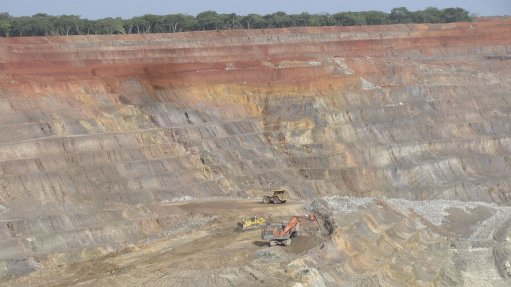
KANSANSHI COPPER MINE ‘Advanced mining techniques’ have assisted the mine in recovering increasingly more ounces of gold during the mineral refining process
Copper mining can produce lucrative by-products, with the most common in Zambia being cobalt, which sells for five times more than copper on world markets.
However, the Zambia Chamber of Mines initiative, Mining for Zambia (MFZ), points out that the ultimate by-product for any copper mine is gold and Canadian base metals producer First Quantum Minerals’ (FQM’s) Kansanshi copper mine, in the North-Western province town of Solwezi, has a considerable amount of it.
The MFZ says that, owing to the “advanced mining techniques” that Kansanshi has built into its mining processes, it has been able to recover increasingly more ounces of gold during the mineral refining process.
The initiative notes that, although gold accounts for only about 10% of Kansanshi’s overall revenue, the quantities are sufficiently large to make Kansanshi Zambia’s largest gold mine.
In 2015, Kansanshi produced 136 000 oz of gold, which has been rising steadily over the years, along with the rise in copper production. Since 2005, the mine has produced more than one-million ounces of gold.
The MFZ comments that, while FQM appreciates the additional gold revenue, Kansanshi is first and foremost a copper mine. “Unlike the older Copperbelt mines, Kansanshi is a relatively new mine, which ensured it was able to start with a clean slate and build a largely new operation unencumbered by any major legacy issues or pre-existing constraints.”
Moreover, the initiative says that, in an unusual departure from the typical long lead time to production and profitability, Kansanshi completed the mine ahead of schedule and started operations ahead of schedule.
It highlights that, within three years, it had generated its first profits and started to pay tax revenue to government. The MFZ says that the mine has always been Zambia’s biggest taxpayer, as, on a yearly basis, it typically accounts for about one-third of the industry’s tax revenues.
“When all the various taxes are combined (royalties, profit-based tax, value-added tax and various duties), Kansanshi has paid about $3-billion in taxes since operations first started in 2005. That is about the same as it has invested in the mine itself,” the initiative emphasises.
Moreover, FQM has ambitions to boost its production even more. “We have always been in project mode and expanding,” says Kansanshi assistant GM Meiring Burger.
He says that the objective is to process increased quantities of ore and generally increase production streams. Burger states that this is what produces economies of scale and lower unit costs, all of which become increasingly important as the mine is starting to encounter more lower-grade ore.
“If the policy and tax environment were to become more investor friendly, we would be able to expand both Kansanshi and our nearby Kalumbila copper mine to produce in excess of 600 000 t/y. That is nearly Zambia’s entire current copper production,” Burger highlights.
He estimates that, in the space of about two years, it would cost about $1-billion and create 1 000 direct jobs, which is about six times the jobs in the town and ther community, owing to the multiplier effect.